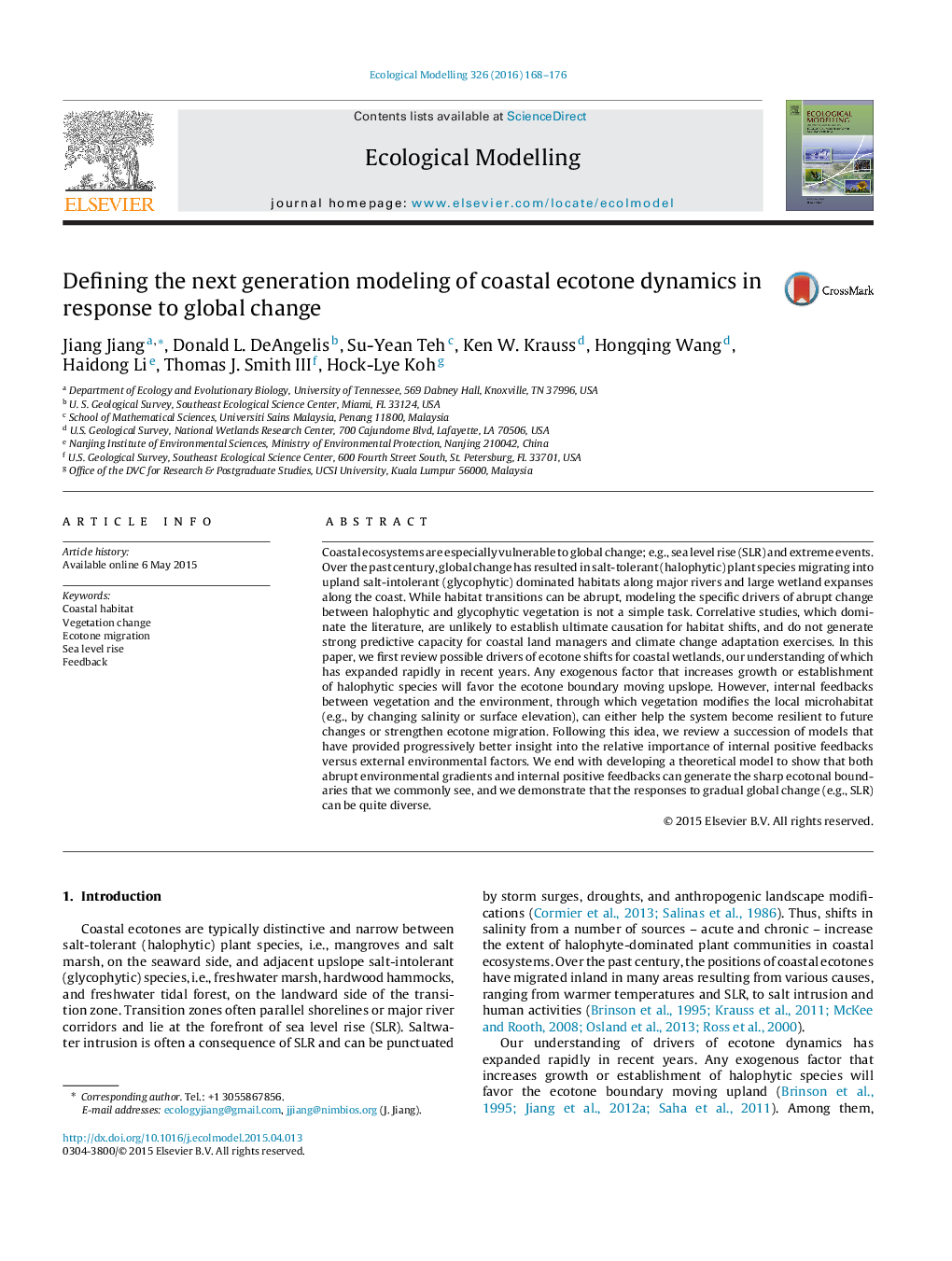| کد مقاله | کد نشریه | سال انتشار | مقاله انگلیسی | نسخه تمام متن |
|---|---|---|---|---|
| 6296363 | 1617421 | 2016 | 9 صفحه PDF | دانلود رایگان |
عنوان انگلیسی مقاله ISI
Defining the next generation modeling of coastal ecotone dynamics in response to global change
ترجمه فارسی عنوان
تعریف مدل سازی نسل بعدی پویایی اکوتون ساحلی در پاسخ به تغییرات جهانی
دانلود مقاله + سفارش ترجمه
دانلود مقاله ISI انگلیسی
رایگان برای ایرانیان
کلمات کلیدی
زیستگاه ساحلی، تغییر گیاه مهاجرت اکوتونی افزایش سطح آب دریا، بازخورد،
موضوعات مرتبط
علوم زیستی و بیوفناوری
علوم کشاورزی و بیولوژیک
بوم شناسی، تکامل، رفتار و سامانه شناسی
چکیده انگلیسی
Coastal ecosystems are especially vulnerable to global change; e.g., sea level rise (SLR) and extreme events. Over the past century, global change has resulted in salt-tolerant (halophytic) plant species migrating into upland salt-intolerant (glycophytic) dominated habitats along major rivers and large wetland expanses along the coast. While habitat transitions can be abrupt, modeling the specific drivers of abrupt change between halophytic and glycophytic vegetation is not a simple task. Correlative studies, which dominate the literature, are unlikely to establish ultimate causation for habitat shifts, and do not generate strong predictive capacity for coastal land managers and climate change adaptation exercises. In this paper, we first review possible drivers of ecotone shifts for coastal wetlands, our understanding of which has expanded rapidly in recent years. Any exogenous factor that increases growth or establishment of halophytic species will favor the ecotone boundary moving upslope. However, internal feedbacks between vegetation and the environment, through which vegetation modifies the local microhabitat (e.g., by changing salinity or surface elevation), can either help the system become resilient to future changes or strengthen ecotone migration. Following this idea, we review a succession of models that have provided progressively better insight into the relative importance of internal positive feedbacks versus external environmental factors. We end with developing a theoretical model to show that both abrupt environmental gradients and internal positive feedbacks can generate the sharp ecotonal boundaries that we commonly see, and we demonstrate that the responses to gradual global change (e.g., SLR) can be quite diverse.
ناشر
Database: Elsevier - ScienceDirect (ساینس دایرکت)
Journal: Ecological Modelling - Volume 326, 24 April 2016, Pages 168-176
Journal: Ecological Modelling - Volume 326, 24 April 2016, Pages 168-176
نویسندگان
Jiang Jiang, Donald L. DeAngelis, Su-Yean Teh, Ken W. Krauss, Hongqing Wang, Haidong Li, Thomas J. III, Hock-Lye Koh,
